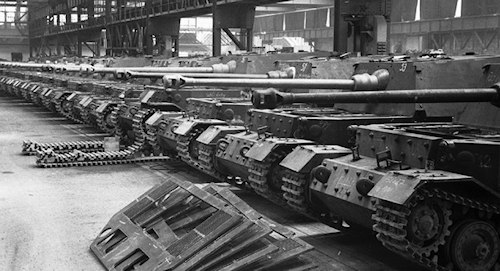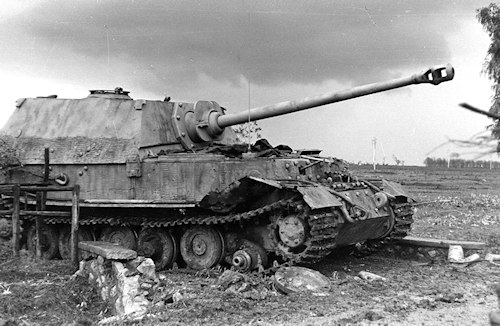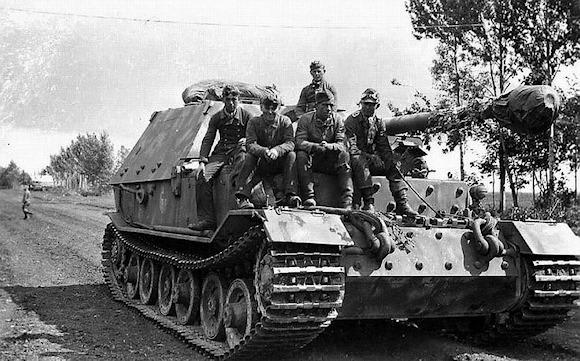The armored fighting vehicle Elephant - Panzerjager Tiger (P) – was a tank destroyer used by the German army in the Second World War. The vehicle was built by installing an 88 mm gun above the hull of the heavy tank Porsche Tiger.
During the war the tank destroyer was heavy, unwieldy and did not give the desired results. For these reasons, only 91 units were produced.
Designed between 1942 and 1943, it entered service in the spring of 1943.
The idea ofElephant it was born, essentially, from the need to have a tank destroyer capable of countering Soviet tanks – in particular the T-34 – who were becoming increasingly formidable on the Eastern Front. The vehicle had the objective of replacing the previous ones panzerjager light as the Marder ii and Marder III.
At first the vehicle was called "Ferdinand" (from the name of the designer Ferdinand Porsche), later it was renamed Elephant.
 The tank was a conversion of the project Tiger, very interesting for the suspension and transmission system adopted. With no revolving turret, the Ferdinand it was equipped with a superstructure in which the cannon resided. It should be noted that in the first examples it was the only armament.1
The tank was a conversion of the project Tiger, very interesting for the suspension and transmission system adopted. With no revolving turret, the Ferdinand it was equipped with a superstructure in which the cannon resided. It should be noted that in the first examples it was the only armament.1
The German designers and technicians, in order to be able to operate against any type of tank even at a considerable distance, decided on the 88 mm PaK cannon as weapon, with a large initial speed, but long and heavy. These defects led to a limited horizontal traverse of the gun, and consequently a modest firing range which, together with the weak maneuverability of the vehicle, quickly put it in a serious state of inferiority in the fighting.
The vehicle, although it had considerable armour, proved to be more vulnerable than expected as it lacked light armament for close defence. In contact with the infantry, the crew had to intervene with individual machine guns. Later it was decided to install a 7,92 mm machine gun in the hull. However, Soviet infantrymen were often able to close within close range of the tank, completely knocking it out with bombs, mines and other types of ordnance.2

Baptism of fire forElephant occurred in the Battle of Kursk (July 5-August 23, 1943); on that occasion the tank destroyer also entered the scene for the first time rhino (see article "The German tank destroyers: the Nashorn")
THEElephant, during the war, it was used on the eastern front and in Italy. Later, the medium was replaced by the Jagdpanzer V Jagdpanther.
It is good to remember that only two Elephant were able to survive the conflict. Indeed, one vehicle was captured by the Soviets at Kursk, while the other was captured by the Americans at Anzio. The former "resides" at the Kubinka Tank Museum, the latter is part of the United States Army Ordnance Training Support Facility at Fort Gregg-Adams – formerly known as Fort Lee – in Virginia.
THEElephant weighed 65 tons. She had a length of 8,14 m, height 2,97 m and width 3,38 m. She had 200 mm armor and armament consisted of an 43 mm PaK 88 cannon and a 34 mm MG 7,92 machine gun.
Engine: 2 Maybach HL 120 TRM petrol engines, power 600 HP. The maximum speed was 30 km/h.
The vessel could count on a crew of 6 men.
1 See C. Falessi and B. Pafi, The Elephant (Ferdinand), in Illustrated History n°146, 1970, p. 97
2 See ibid
Photo: web / Bundeswher












